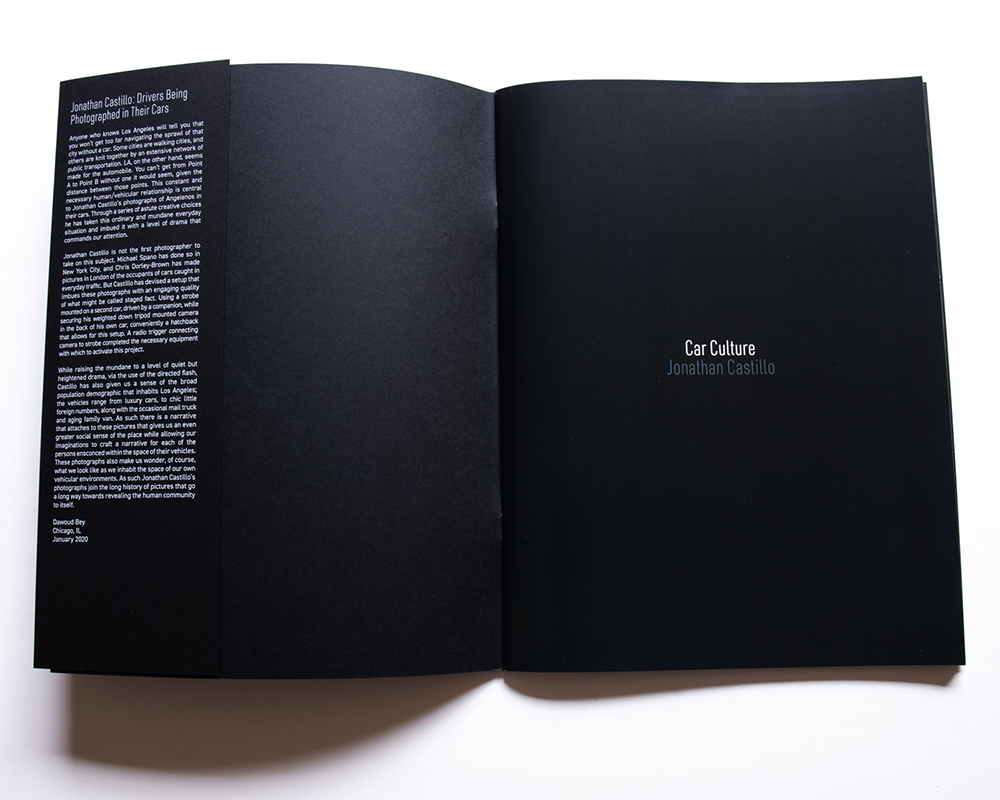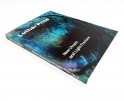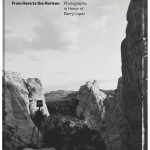Jonathan Castillo: Car Culture
Los Angeles is known more than any other American city for its traffic. Yet to locals, traffic can be more than time spent waiting—the car becomes a venue for introspection and conversation. Jonathan Castillo’s recent book Car Culture, published by Skylark Editions in 2022, gives viewers a sense not only of 21st century automobile culture in Los Angeles, but a unique and privileged view of the people and their cars who spend time there. As the inimitable Dawoud Bey notes in his introduction to Castillo’s book, “Anyone who knows Los Angeles will tell you that you won’t get too far navigating the sprawl of that city without a car.”
Today Sara J. Winston and Jonathan Castillo discuss the making of Car Culture.
Sara J. Winston: Congratulations on your book CAR CULTURE! It is a fascinating look at LA, its drivers, and the photograph as document. Thank you very much for taking some time today to answer a few questions about the photographs and the book. When you began your CAR CULTURE study, what were you curious to discover about Los Angeles commuters?
Jonathan Castillo: I don’t think I really had any specific expectations of what I would learn from this project when I started it back in 2010. Growing up in Los Angeles I spent a lot of time in my car and much of that time was spent sitting in traffic. For me the car is a great place to get lost in your own thoughts and it can be a very introspective place, which I think is often reflected in my images. When I started this project it was a bit of an experiment in that I wasn’t sure if I could rig my camera and lighting equipment to get the kinds of images I was hoping to make. The project was an evolution of a previous series where I had set out to emulate Philip-Lorca diCorcia’s project Heads while I was at Moorpark College. Trying to make images like diCorcia taught me a lot, but ultimately it wasn’t entirely satisfying. I kept thinking that while I enjoyed the process of using strobe in a street photography context the images I was making were just lesser versions of what diCorcia had already made. I also realized that being in Los Angeles there weren’t many places with dense populations of pedestrians to photograph on the street which is what got me thinking about the differences between Los Angeles and New York where diCorcia made his images. When I finally got the idea that I should try photographing Angelinos in their cars the project quickly came together.
SJW: Did that inquiry evolve over the years you spent photographing there?
JC: I think the basics of the project were pretty much solidified in the first several months when I made my first images. At one point I tried to change the perspective from which I photographed and change lighting angles and none of it worked anywhere near as well as the frontal images I had made first. The project really is a typology of Los Angeles drivers in their cars set against varying LA landscapes. What evolved a bit is how I think about the work. For me it’s become as much a collective portrait of Los Angeles as it is a typology of Los Angeles Drivers and their cars. It’s also become a bit of a time capsule in that when I look back at these images, the style of cars change, the signage of movies and shows in LA changes and billboards reflect specific things happening in the culture of the city at that time. For a while now I’ve thought that at some point with the push to create self-driving cars these images might be even more of a historical document. If cars don’t need drivers then will they still need windshields and in that new reality would I even be able to make images like this anymore? It’s important that people know that I do this project with a group of people. There’s usually four of us driving around in two cars to make these images. I drive my car with the camera and Briana Pattillo has driven my lighting car except on one occasion. We each have an assistant helping us in our respective vehicles. While I’ve had a long list of friends assist me with this project, Bri has been there for the entire thing and she deserves a lot of credit for helping me with this project so consistently and for so long. Unlike most street photography or commuting alone in your car this project is not a solitary venture.
SJW: How many photographs do you think you made, total?
JC: I’m fairly certain it’s over a thousand drivers that I’ve photographed in total but I don’t think I’ve ever really counted. When we go out to make the photographs it’s usually an all day affair with a break midday for food. So other than that break it’s driving all day and making a photograph of someone at almost every red light we stop at as long as someone pulls up behind us.
SJW: How did you know that this work was complete and ready to be considered for the book form? Did you always have the book in mind?
JC: I have always wanted to make books of all my projects but the publishing world always seemed very opaque. The project felt ready for book form after the last time I made photos in the summer of 2019. I had recently made a new batch of images I was excited about, the work got published in the New Yorker and I started working with Samuel Maenhoudt gallery in Belgium to take the work to art fairs, starting with Photo LA in early 2020. It was 10 years after I started the project and I was starting to get some momentum with the project again but then we all know what happened in March of 2020. So, during the pandemic the project kinda was put back on the shelf until things started opening up again at which point there were some discussions of further shows and then I started talking to Skylark about the possibility of a book. It’s been a long process getting to the point where a book was possible.
SJW: Would you share a little bit about your editing criteria for the book? Was there a meditative or rhythmic approach to the sequencing process?
JC: When it came to editing the entire project down to what images get exhibited or included in the book it’s always been about looking for the images I felt stood out among the group in some way. Sometimes it’s the person, the car or some moment the person is involved in. The woman in the green Volkswagen is a good example. The car is filled with balloons, she’s smoking a cigarette, wearing these very dark glasses and looking out the side of the car. Everything comes together in an unexpected way. In other circumstances it’s just a simple quiet introspective moment that works for me. The signage and landscape can often add a lot to an image for me as well. As for the sequencing in the book, I would say that was guided mainly by trying to not feel too repetitive. Since the photographs are essentially the exact same basic composition the differences in people, color, make and model of cars and the changing landscape all become very important. I relied a lot on Kelli Connell (from Skylark Editions) and Bri Elliot (our designer) to help me make sure the sequencing felt right.
SJW: Please tell us about the self portrait you included in the book.
JC: The self-portrait that you may have seen on social media is actually not included in the book. I made it as an artist portrait in my own car outside of my studio in Chicago and I printed a limited edition set of them for friends and family who have supported me and my work over the years. I jokingly labeled it as the “secret edition” print for friends and family. The “special edition” of the book does come with a different print from my Los Angeles series that is only available with the purchase of the book. I figured it might be a fun and fitting artist portrait to accompany the project and the book.
SJW; Does the work in book form surprise you? What is it like for you now that CAR CULTURE is out in the world?
JC: It’s always a bit surprising to see my work culminate in physical form, whether that’s installed in a show or as a book. I spend a lot of time looking at my work on screens or smaller prints so it’s always a pleasure to see the work come together into something that I can share physically with people. Now that the book has been published and it’s out in the world it’s been a lot of fun to hear about the book ending up in unexpected places. Finding out the book was put in a museum gift shop or ended up in a bookstore in Germany always puts a smile on my face. A former professor of mine from CSULB sent me an email about how she was in a bookstore in Los Angeles and that someone she didn’t know was asking if the bookstore carried the book. It’s totally wild to me that someone I don’t know was asking for my book in an art book store in LA and my former professor happened to be there to overhear it and let me know about it.
SJW: What are you currently working on, and what is on the horizon for you as an artist?
JC: I’m working on a lot of things now actually. I’m in the middle of a couple big public art projects for the City of Chicago, a couple commissions for the Not Just Another Pretty Face exhibition at the Hyde Park Art Center, finishing up a portfolio box of my Unaccompanied project from my previous work with the Diane Dammeyer Fellowship and expanding on another long-term project about Immigrant Owned businesses for a grant I got from the FACE foundation (French American Cultural Exchange). With the public art projects, I’m in the middle of finalizing details for a large permanent installation of my Immigrant Owned work in the baggage claim area of Terminal 5 at the O’Hare International airport here in Chicago. I’m working on a series of very large light boxes for that project with DCASE and the Chicago Department of Aviation. Additionally, I’m in the last month or so of making new work for the City of Chicago’s long term planning initiative called We Will Chicago, where I have been photographing Black and Latino owned businesses mainly on the South and West sides of the city. The work is coinciding with the economic development pillar of this newly adopted city plan.
Car Culture by Jonathan Castillo is published by Skylark Editions and includes an essay by Dawoud Bey. The photobook is available for purchase through Skylark Editions website.
Jonathan Castillo is a visual artist, photographer, and educator based in Chicago. He was the 2019-2021 recipient of the Diane Dammeyer Fellowship in Photographic Arts and Social Issues. Jonathan was included in the 2021 Hyde Park Art Center’s Ground Floor Biennial in Chicago and was a finalist for the WMA Commission in Hong Kong. His work has been featured in The New Yorker, Wired, The Chicago Tribune, CBS: Los Angeles, and Brazil’s G1 Globo. He has appeared on the radio to discuss his photography on the BBC’s“World Update” and local Los Angeles public radio programs KPCC and KCRW. Jonathan was recently commissioned to create a large-scale permanent installation of his work at O’Hare International Airport as part of the new Terminal 5 expansion project. Exhibitions include those at the Art Institute Chicago, Photo LA 2020, the Center for Creative Photography, Aperture Gallery, House of Lucie, Filter Photo Gallery, Ralph Arnold Gallery, and the California Museum of Art Thousand Oaks. Samuel Maenhoudt Gallery in Belgium represents Jonathan. His education includes a BFA from California State University Long Beach and MFA from Columbia College Chicago.
Sara J. Winston is an artist and contributor to Lenscratch.
Follow Jonathan Castillo, Skylark Editions, and Sara J. Winston on Instagram:
@joncastillophoto @skylarkeditions @sarajwinston
Posts on Lenscratch may not be reproduced without the permission of the Lenscratch staff and the photographer.
Recommended
-
Luther Price: New Utopia and Light Fracture Presented by VSW PressApril 7th, 2024
-
From Here to the Horizon: Photographs in Honor of Barry LopezApril 3rd, 2024
-
Shinichiro Nagasawa: The Bonin IslandersApril 2nd, 2024
-
Kristine Nyborg: Learning to Speak BearApril 1st, 2024






































































